Welcome to the School Streets page!
This page provides helpful information on School Streets for anyone looking to implement one and includes Canadian and international resources. We are excited to see the increasing number of School Streets in Canada and are eager to see more. We hope this page will encourage you to pilot one in your community and take back the streets for our children, their caregivers and teachers.
If you think this page is missing a resource, contact us at the email below.
What’s new?
Government of Canada Announces $3 Million Investment to Support Children’s Physical Activity
Green Communities Canada, 8 80 Cities and partners will receive $3 million from the Public Health Agency of Canada to accelerate the implementation of School Streets across Canada. The National Active School Streets Initiative (School Streets) is a nationwide collaboration between not-for-profit organizations (Green Communities Canada, 8 80 Cities, Centre d’écologie urbaine), research institutions (Université de Montréal, University of British Columbia, Queen’s University, Toronto Metropolitan University), and 16 community partners spanning six provinces (British Columbia, Alberta, Manitoba, Ontario, Quebec, and New Brunswick).
School Streets Toolkit
Are you planning to implement your own School Street but don’t know where to start? Check out our newly published School Street Toolkit to help you get started. The toolkit based on lessons learned from the School Street pilots across the Greater Toronto Area and Kingston, ON has more than 25 worksheets, sample templates and resources to help you plan, implement and evaluate your own School Street.
Street Types Explainer
Street Rebalancing is an approach to street design that prioritizes forms of active travel like walking, cycling and rolling over single-occupancy vehicles on our streets. Through the introduction of these very street rebalancing programs, cities can introduce far more sustainable and equitable transportation options for their residents, which in turn, allows for the establishment of healthier and safer communities for all individuals regardless of age, gender, sex, ability, race, socioeconomic status and more.
In this document, we explain three major street rebalancing programs, which are Open Streets, Quiet Streets and School Streets.
School Streets Logo
Is your community moving forward with a School Streets Pilot? We are happy to share the School Streets program logo for you to include in your communications and program materials!
What are School Streets Programs?
School Streets are programs that create a car-free environment in front of schools at the start and end of the school day to prioritize safe walking conditions for children, their caregivers and teachers.
School Streets originated in Bolzano, Italy in the early 1990s when school communities struggled to manage traffic during peak pick-up and drop-off hours, and they called for a solution. In response, they launched several School Streets, transforming streets into temporary car-free zones and eliminating congestion in front of schools.
Following this initiative, more places in Europe started replicating School Streets, like Edinburgh, London, and Denmark. In Canada, it has been implemented in cities like Vancouver, BC; Victoria, BC; Winnipeg, MB; and in Ontario, Toronto, Hamilton, Mississauga, Markham, and Kingston; and Montreal in Quebec.
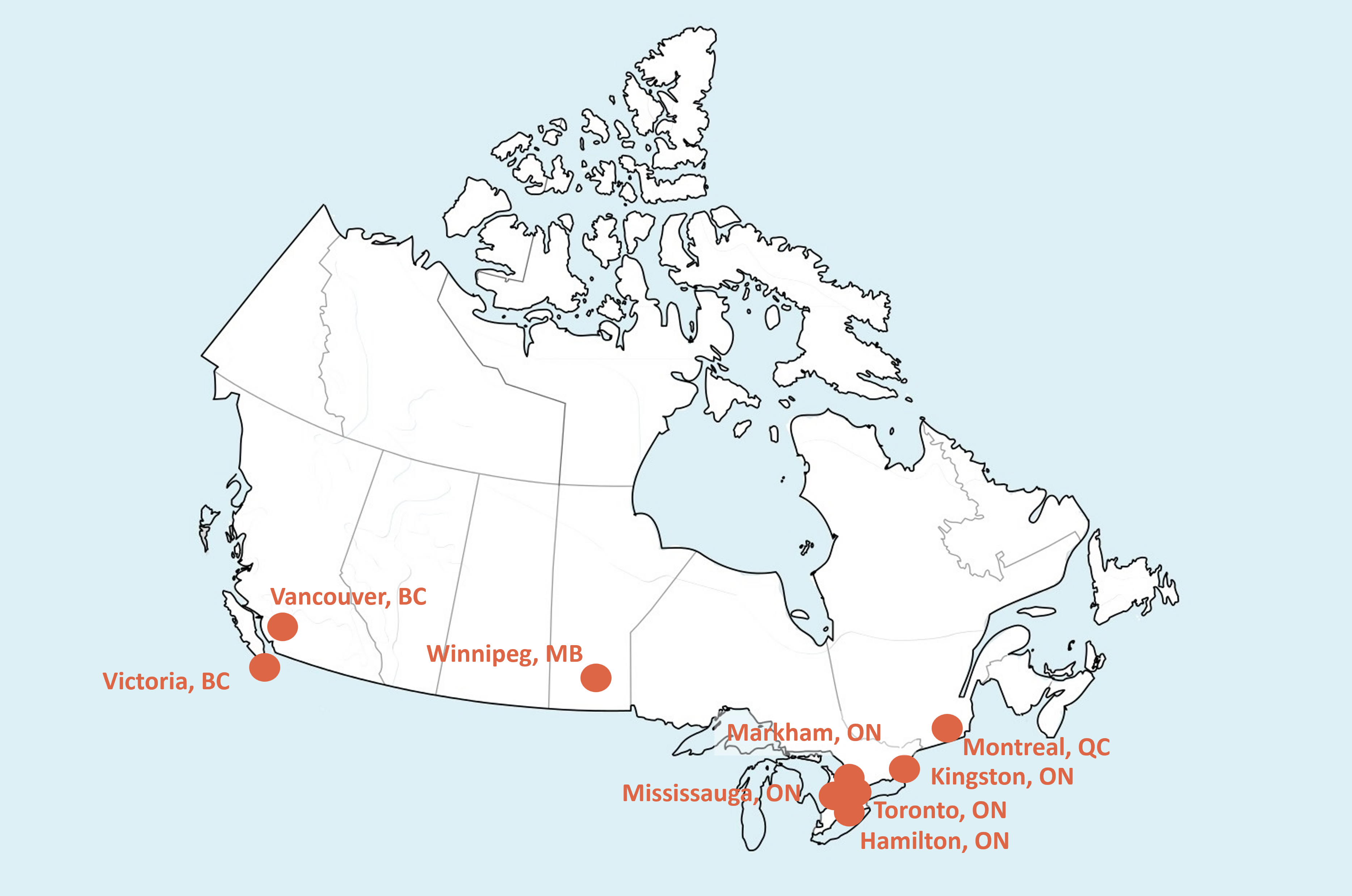
Benefits of School Streets

Improve Safety
Children are more vulnerable to road danger, especially with the bigger vehicles that are found on our roads these days. By restricting car access, School Streets make streets safer for all road users.

Improve Air Quality
Having vehicles around schools compromises the air quality around schools leaving children and their developing lungs vulnerable. School Streets mitigates idling time and encourages cleaner environments for all.

Increase Active Travel
Only a third of Canadian children are achieving the recommended amount of activity for their age group. Walking or biking to and from school can add upwards of 30 minutes of physical activity each day, and School Streets provide the opportunity to do so.

Encourage Independent Mobility
More and more kids are being driven to school these days. School Streets lets children have more autonomy in the way they get to and from school safely.

Foster Community Connection and Sociability
School Streets bring community members together to make streets cleaner and safer. Working collaboratively with others contributes to broader and stronger community connections with one another.

Reduce Traffic Congestion
On average, 25% of road congestion during morning rush hour is related to school drop-off. School Streets alleviate congestion in front of schools and encourage active modes of transportation.
Resources on School Streets
Reports & Guidebooks
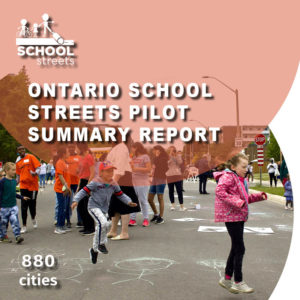
Ontario School Streets Summary Report
This report summarizes our findings from the pilot School Streets in Mississauga, Markham, Hamilton and Kingston along with a set of recommendations for future School Streets. 8 80 Cities, along with Green Communities Canada, supported the planning, implementation and evaluation of their School Streets programs over a year through the Ontario School Streets Pilot (OSSP) project.
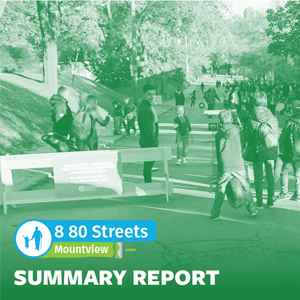
8 80 Streets Mountview
Toronto’s first School Streets pop-up, demonstrated how to create safer roads near schools through programming rather than reconstruction. For four days in October 2019, we created a temporary car-free environment on Mountview Avenue at Keele Street Public School during school drop-off and pick-up times to prioritize safe walking conditions for children, parents, and caregivers.
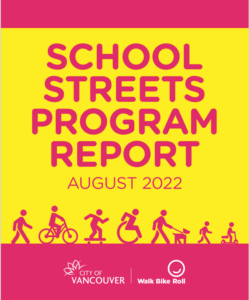
School Streets Vancouver
In Spring 2021, the City of Vancouver in partnership with the Vancouver School Board piloted School Streets at three elementary schools. The following school year, the City expanded the program to five elementary schools.

School Streets Guidebook
The School Streets Guidebook was developed with the Capital Regional District of British Columbia and the City of Victoria to communicate further what School Streets are and how to plan and implement these programs locally.
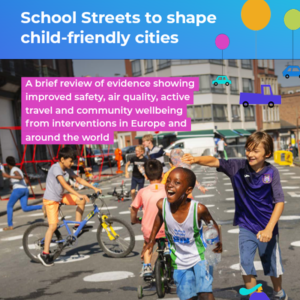
School Streets to shape child-friendly cities
The report collects evidence of the benefits of School Streets to improve community wellbeing from interventions in Europe and around the world.
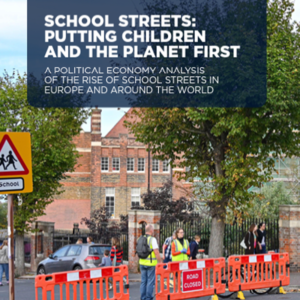
School Streets: Putting children and the planet first
This report is a political and economic analysis of the impacts of the rise of School Streets in Europe and around the world.
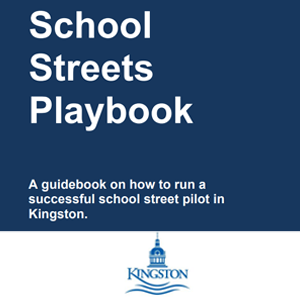
School Streets Playbook
A guidebook on how to run a successful School Street pilot in Kingston, Canada.
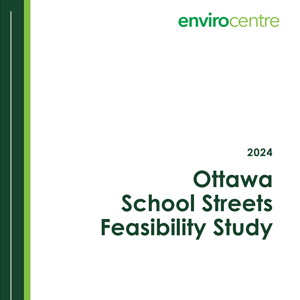
Ottawa School Streets Feasibility Study
A study on the conditions for local implementation and rollout of a School Streets program in Ottawa, Canada.
Articles & Papers
- What Are School Streets?
- Why did our children stop walking to school?
- School Streets Taking Off Across the GTHA
- New Project to Pilot School Streets in Three Ontario Communities
- A Tale of Two Cities: Unpacking the Success and Failure of School Street Interventions in Two Canadian Cities
- Toronto’s first-ever “School Streets” pop-up will create a car-free zone that prioritizes pedestrians, especially children walking to school, in the lead-up to Halloween
- Street in front of High Park school blocks off cars during the morning, afternoon rush
- New pilot project bans vehicles from the street in front of Toronto school
- This Toronto Street is Banning Cars For Kids’ Safety
- School Streets: A Pilot At Isaac Brock
- Review of inspiring case studies Play Streets and School Streets
- New studies show School Streets improve air quality
- Equity in temporary street closures: The case of London’s Covid-19 ‘School Streets’ schemes
- School Streets research finds road closures benefit health, air quality and congestion
- Improving Children’s Health By Supporting Their Right to the City
- Children’s Right to the City and Their Independent Mobility: Why It Matters for Public Health
- “Hard-To-Reach” or Hardly Reaching? Critical Reflections on Engaging Diverse Residents From Low Socio-Economic Status Neighborhoods in Public Health Research
- A Tale of Two Cities: Unpacking the Success and Failure of School Street Interventions in Two Canadian Cities
- Reimagining North American Streets for Safem Active, and Joyful Trips to School
For more information on how to plan and adopt School Streets programs in your community, please contact Amanda O’Rourke, Executive Director, 8 80 Cities, at aorourke@880cities.org.



